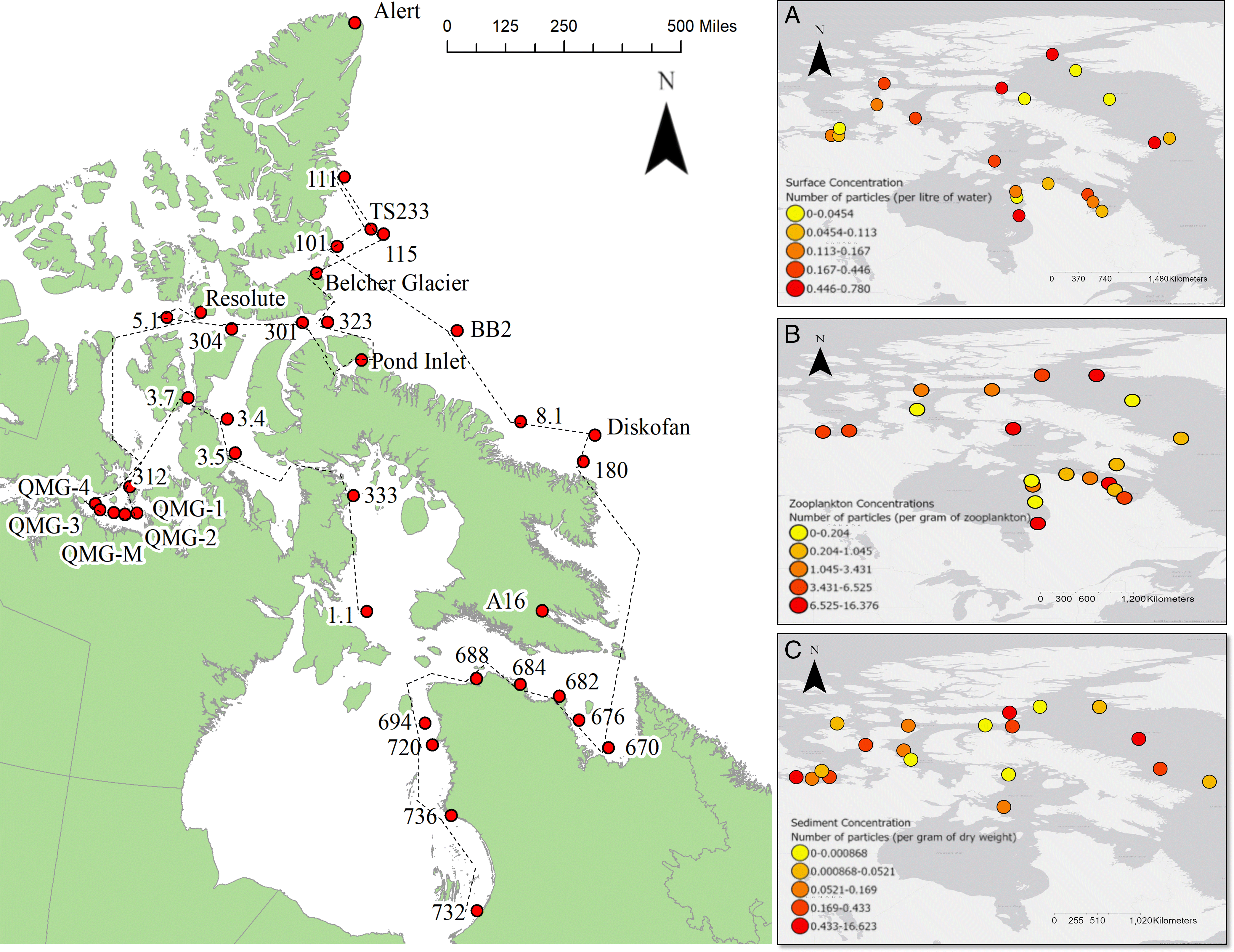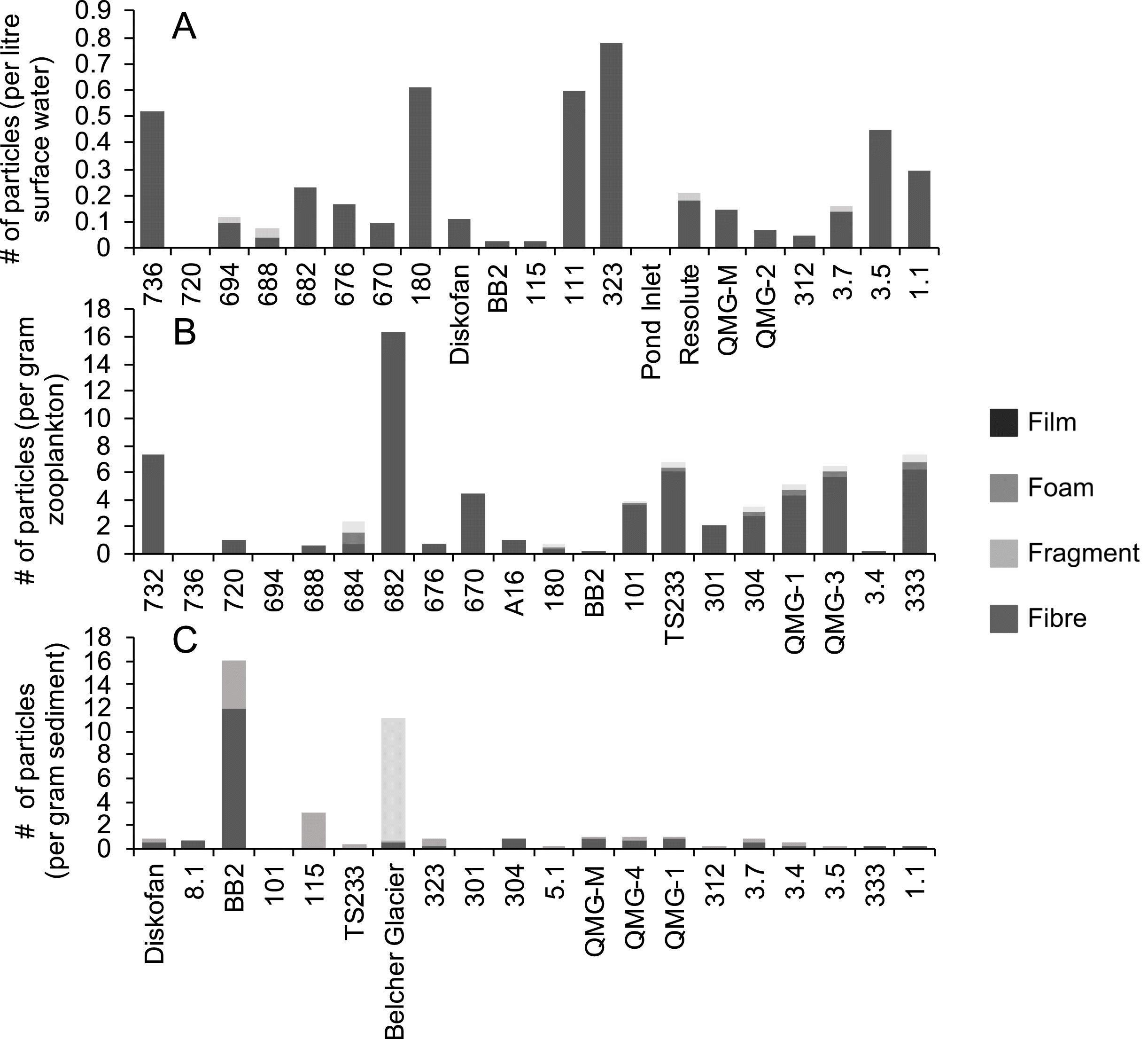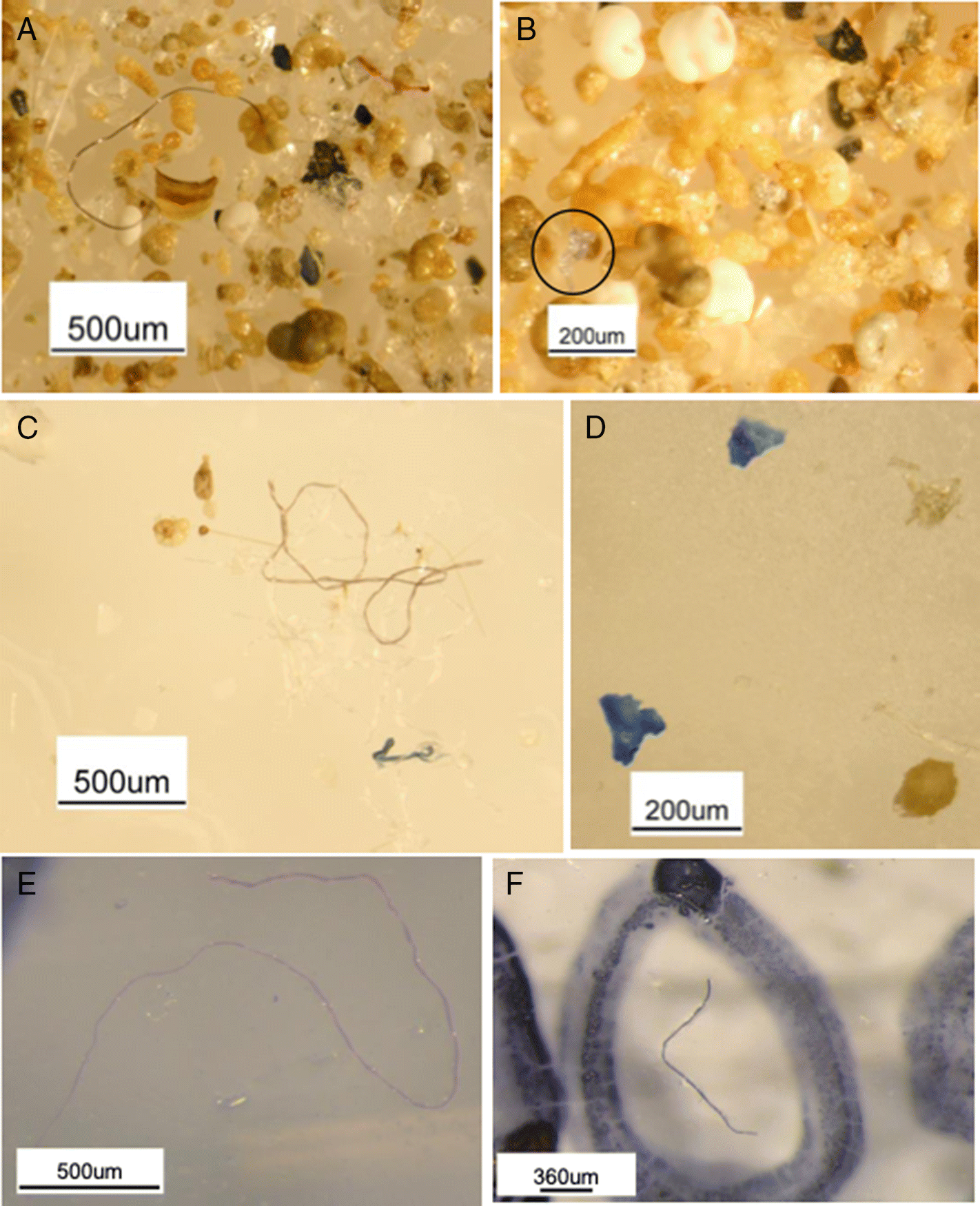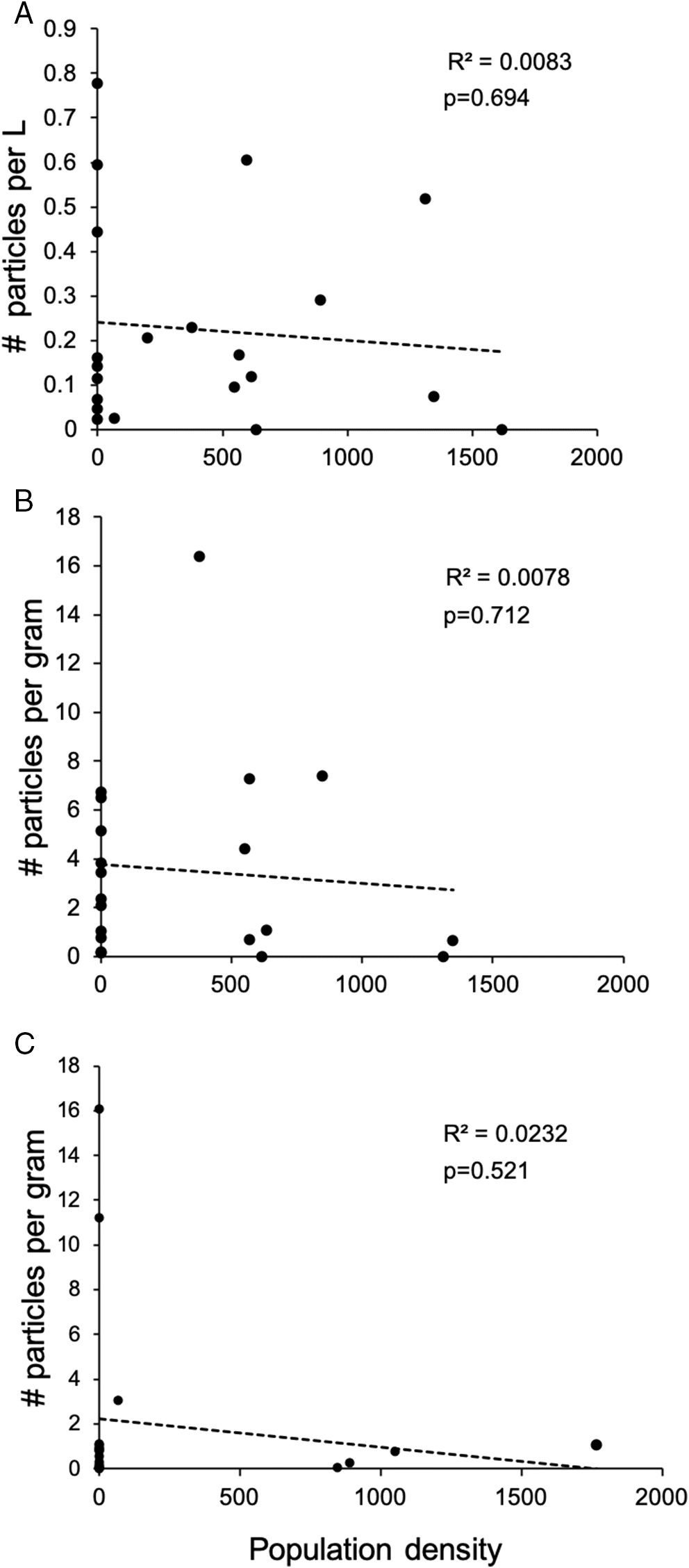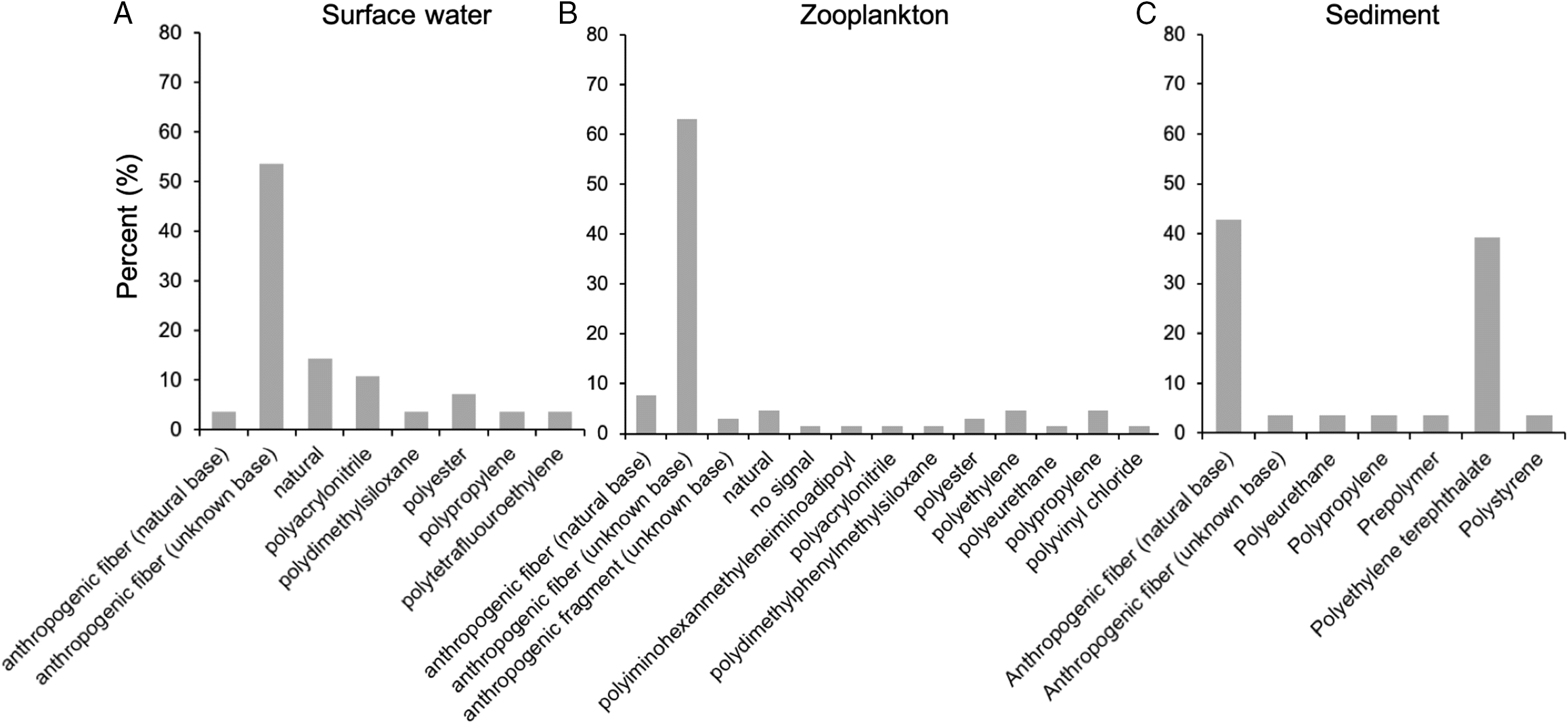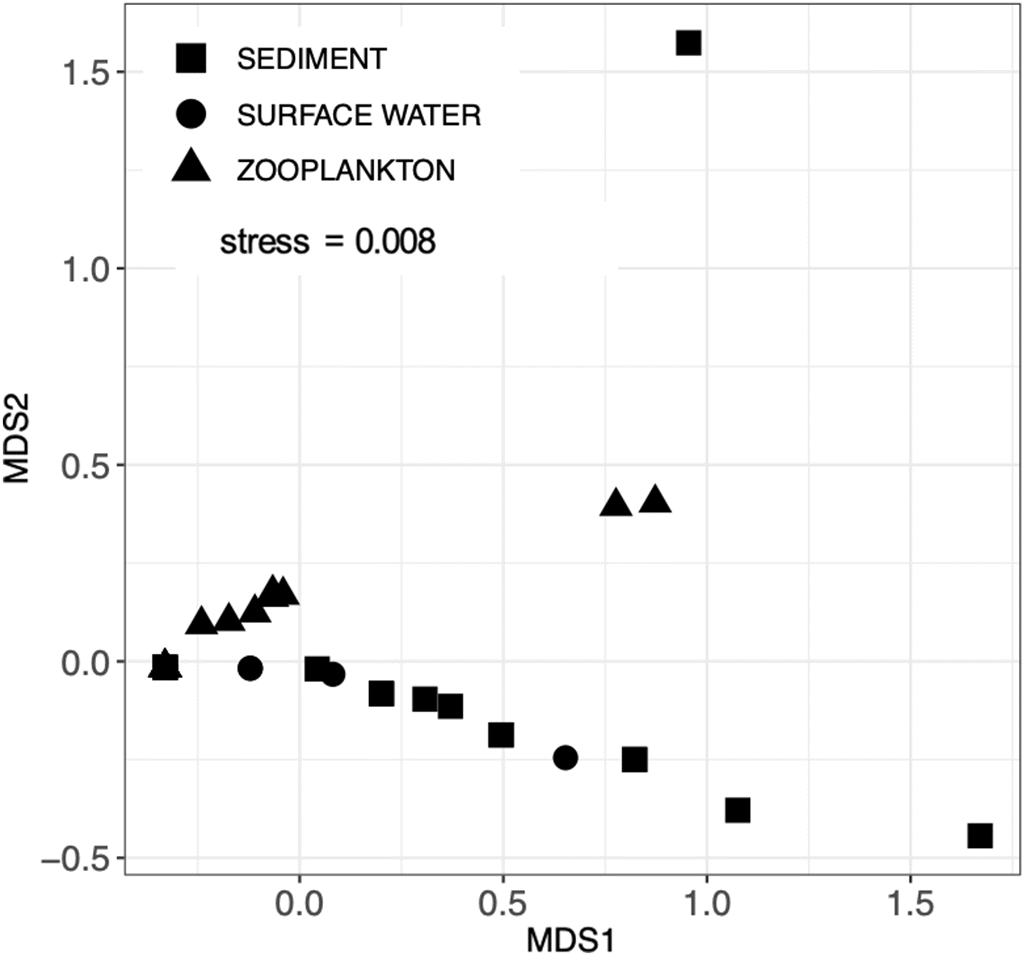Cited by
1. From the Caribbean to the Arctic, the most abundant microplastic particles in the ocean have escaped detection
2. Microplastics and anthropogenic microparticles in surface waters from Yellowknife Bay, Great Slave Lake, Northwest Territories, Canada
3. Microplastics in the Volta Lake: Occurrence, distribution, and human health implications
4. The Occurrence of Microplastics in Donax trunculus (Mollusca: Bivalvia) Collected along the Tuscany Coast (Mediterranean Sea)
5. Plastic and anthropogenic microfiber pollution on exposed sandy beaches in Nova Scotia, Canada
6. Occurrence Characteristics and Ecotoxic Effects of Microplastics in Environmental Media: a Mini Review
7. Surface microplastics in the Kara Sea: from the Kara Gate to the 83°N
8. Spatial distribution of anthropogenic particles and microplastics in a meso-tidal lagoon (Arcachon Bay, France): A multi-compartment approach
9. A first assessment of microplastic contamination in the snow of Ankara, Turkey
10. Assessment of microplastic contamination in the Loire River (France) throughout analysis of different biotic and abiotic freshwater matrices
11. Aquatic worms: relevant model organisms to investigate pollution of microplastics throughout the freshwater-marine continuum
12. Cryosphere as a temporal sink and source of microplastics in the Arctic region
13. Research progress on microplastics pollution in polar oceans
14. Long term trends in floating plastic pollution within a marine protected area identifies threats for Endangered northern bottlenose whales
15. Microplastic Pollution in the Polar Oceans – A Review
16. The power of multi-matrix monitoring in the Pan-Arctic region: plastics in water and sediment
17. Microplastics in Arctic invertebrates: status on occurrence and recommendations for future monitoring
18. No accumulation of microplastics detected in western Canadian ringed seals (Pusa hispida)
19. Microplastic materials in the environment: Problem and strategical solutions
20. The Phenomenon of Antibiotic Resistance in the Polar Regions: An Overview of the Global Problem
21. Models of justice evoked in published scientific studies of plastic pollution
22. A review on state-of-the-art detection techniques for micro- and nano-plastics with prospective use in point-of-site detection
23. Horizontal distribution of surface microplastic concentrations and water-column microplastic inventories in the Chukchi Sea, western Arctic Ocean
24. Understanding microplastic pollution in the Nordic marine environment – knowledge gaps and suggested approaches
25. Shorebirds ingest plastics too: what we know, what we do not know, and what we should do next
26. An ecotoxicological risk model for the microplastics in arctic waters
27. Microplastics in the first-year sea ice of the Novik Bay, Sea of Japan
28. The Chubut River estuary as a source of microplastics and other anthropogenic particles into the Southwestern Atlantic Ocean
29. Microplastics distribution in sediment and mussels along the British Columbia Coast, Canada
30. Plastic burdens in northern fulmars from Svalbard: Looking back 25 years
31. Microsynthetics in waters of the South American Pantanal
32. Microplastics in sediments of the Pantanal Wetlands, Brazil
33. Microplastics in global bivalve mollusks: A call for protocol standardization
34. Investigation of microplastic pollution in Arctic fjord water: a case study of Rijpfjorden, Northern Svalbard
35. Anthropogenic microfibers are highly abundant at the Burdwood Bank seamount, a protected sub-Antarctic environment in the Southwestern Atlantic Ocean
36. Microplastics in arctic invertebrates- Status on occurrence and recommendations for future monitoring
37. Microplastic ingestion in zooplankton from the Fram Strait in the Arctic
38. Microplastics and nanoplastics in the marine-atmosphere environment
39. Plastic pollution in the Arctic
40. Microplastics captured by snowfall: A study in Northern Iran
41. Are We Underestimating Anthropogenic Microfiber Pollution? A Critical Review of Occurrence, Methods, and Reporting
42. Microplastics in beluga whale (Delphinapterus leucas) prey: An exploratory assessment of trophic transfer in the Beaufort Sea
43. Spatio-temporal variation of microplastic pollution in the sediment from the Chukchi Sea over five years
44. Assessment of Microplastics in Irish River Sediment
45. Evidence of Microplastic Size Impact on Mobility and Transport in the Marine Environment: A Review and Synthesis of Recent Research
46. Are we contaminating our samples? A preliminary study to investigate procedural contamination during field sampling and processing for microplastic and anthropogenic microparticles
47. Pervasive distribution of polyester fibres in the Arctic Ocean is driven by Atlantic inputs
48. Current status of studies on microplastics in the world's marine environments
49. Microbial colonizers of microplastics in an Arctic freshwater lake
50. Prevalence of microplastics and anthropogenic debris within a deep-sea food web
51. Prioritizing Suitable Quality Assurance and Control Standards to Reduce Laboratory Airborne Microfibre Contamination in Sediment Samples
52. Microplastics and other anthropogenic particles in Antarctica: Using penguins as biological samplers
53. Anthropogenic litter in marine waters and coastlines of Arctic Canada and West Greenland
54. Microplastics in polar regions: An early warning to the world's pristine ecosystem
55. Monitoring Surfactants Pollution Potentially Related to Plastics in the World Gyres Using Radar Remote Sensing
56. Domestic laundry and microfiber pollution: Exploring fiber shedding from consumer apparel textiles
57. Remote, but Not Isolated—Microplastics in the Sub-surface Waters of the Canadian Arctic Archipelago
58. Microplastics around an Arctic seabird colony: Particle community composition varies across environmental matrices
59. Breeding seabirds as vectors of microplastics from sea to land: Evidence from colonies in Arctic Canada
60. Bioretention cells remove microplastics from urban stormwater
61. Anthropogenic Microfibers are Highly Abundant at the Burdwood Bank Seamount, a Protected Sub-Antarctic Environment in the Southwestern Atlantic Ocean
